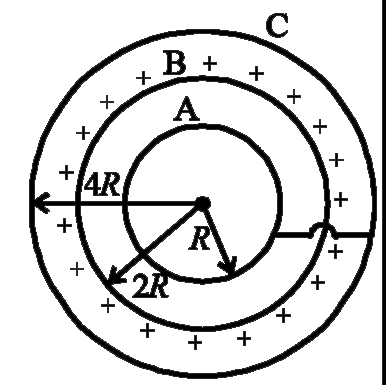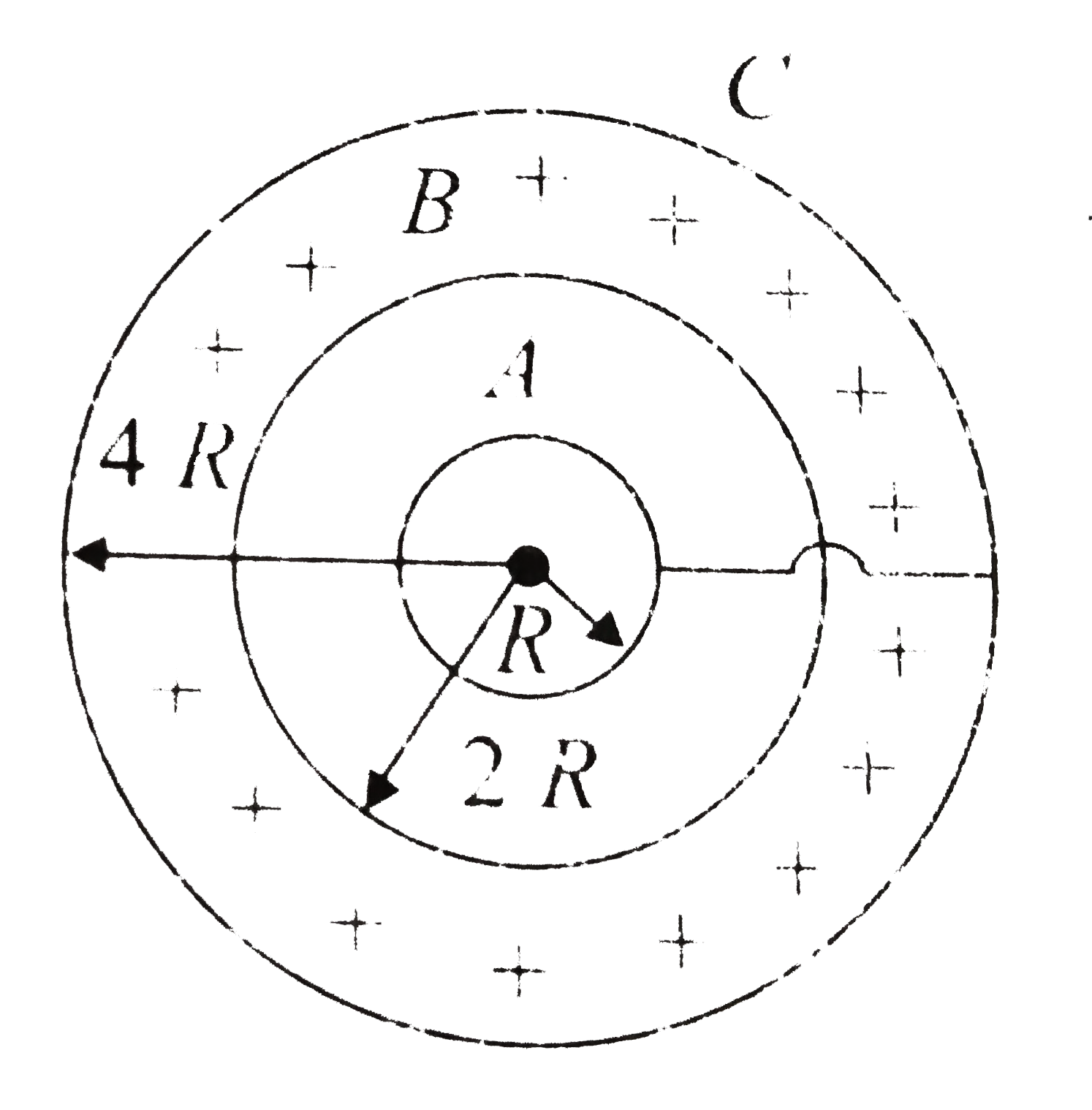Two conducting concentric, hollow spheres A and B have radii a and b respectively, with A inside B. Their common potentials is V. A is now given some charge such that its potential becomes zero. The potential of B will now be
0
V(1−ab)
(Vab)
V(b−a)(b+a)
The correct Answer is:B
Let initial charge on B be Q. Then , V = kQ/b. There is no initial charge on A, as A and B are at the same potential. Let q charge be now given to A. Potential of A now is
kqa+kQb=0 or q=−Qab …(i)
Potential of B now is
k(Q+qb)=kb[Q−Qab]=kQb(1−ab)=V(1−ab) (Using (i))
Topper's Solved these Questions
- BOOK - MTG GUIDECHAPTER - ELECTROSTATICSEXERCISE - NEET ITALS1videos
ELECTROSTATICS
- BOOK - MTG GUIDECHAPTER - ELECTROSTATICSEXERCISE - NEET VITALS18videos
ELECTROSTATICS
- BOOK - MTG GUIDECHAPTER - ELECTROSTATICSEXERCISE - AIPMT/NEET (MCQ.s)34videos
ELECTROSTATICS
- BOOK - MTG GUIDECHAPTER - ELECTRONIC DEVICESEXERCISE - AIPMT/NEET (MCQs)42videos
ELECTRONIC DEVICES
- BOOK - MTG GUIDECHAPTER - MAGNETIC EFFECTS OF CURRENT AND MAGNETISMEXERCISE - AIPMT/NEET (MCQs)48videos
MAGNETIC EFFECTS OF CURRENT AND MAGNETISM
Similar Questions
Two spheres A and B of radius a and b respectively are at the same potential. The ratio of the surface charge density of A to B is
View SolutionThree concentric spherical conductors A, B and C of radii R, 2R and 4R respectively. A and C is shorted and B is uniformly charged .
Potential at B is
 View Solution
View Solution
Knowledge Check
- Question 1 - Select One
Two spheres A and B of radius 'a' and 'b' respectively are at same electric potential. The ratio of the surface charge densities of A and B is
AabBbaCa2b2Db2a2 - Question 2 - Select One
In the given circuit the potential at point B is zero, the potential at points A and D will be
 AVA=4V,VD=9VBVA=3V,VD=4VCVA=9V,VD=3VDVA=4V,VD=3V
AVA=4V,VD=9VBVA=3V,VD=4VCVA=9V,VD=3VDVA=4V,VD=3V - Question 3 - Select One
Equal charges are given to two spheres of different radii . The potential will be
Amore on smaller sphereBmore on bigger sphereCequal on both the sphereDnone of these
Three concentric spherical conductors A, B and C of radii R, 2R and 4R respectively. A and C is shorted and B is uniformly charged
Potential at A is
 View Solution
View SolutionThree concentric spherical conductors A, B, and C of radii r, 2R, and 4R, respectively. A and C is shorted and B is uniformly charged (charge +Q).

Potential at B isView SolutionTwo copper spheres A and B of same radii, one hollow and the other solid are charged to the same potential. Which of the two will hold more charge
View SolutionA hollow metallic sphere of radius 0.1 m is charged to a potential of 5 V. The potential at its centre is
View SolutionEqual charges are given to two spheres of different radii. The potential will
View Solution

